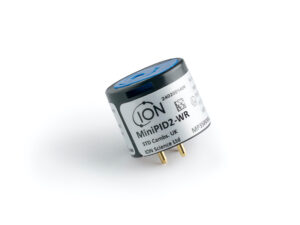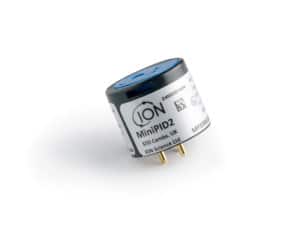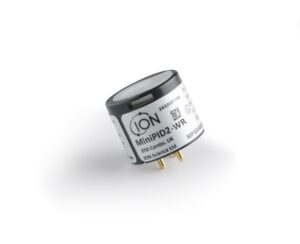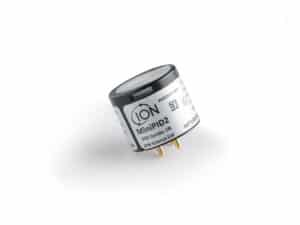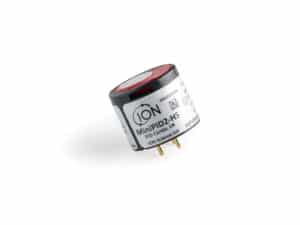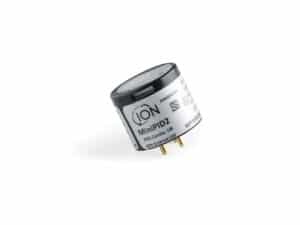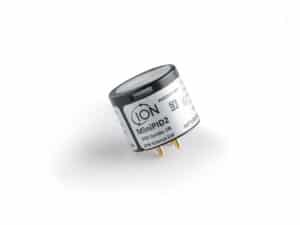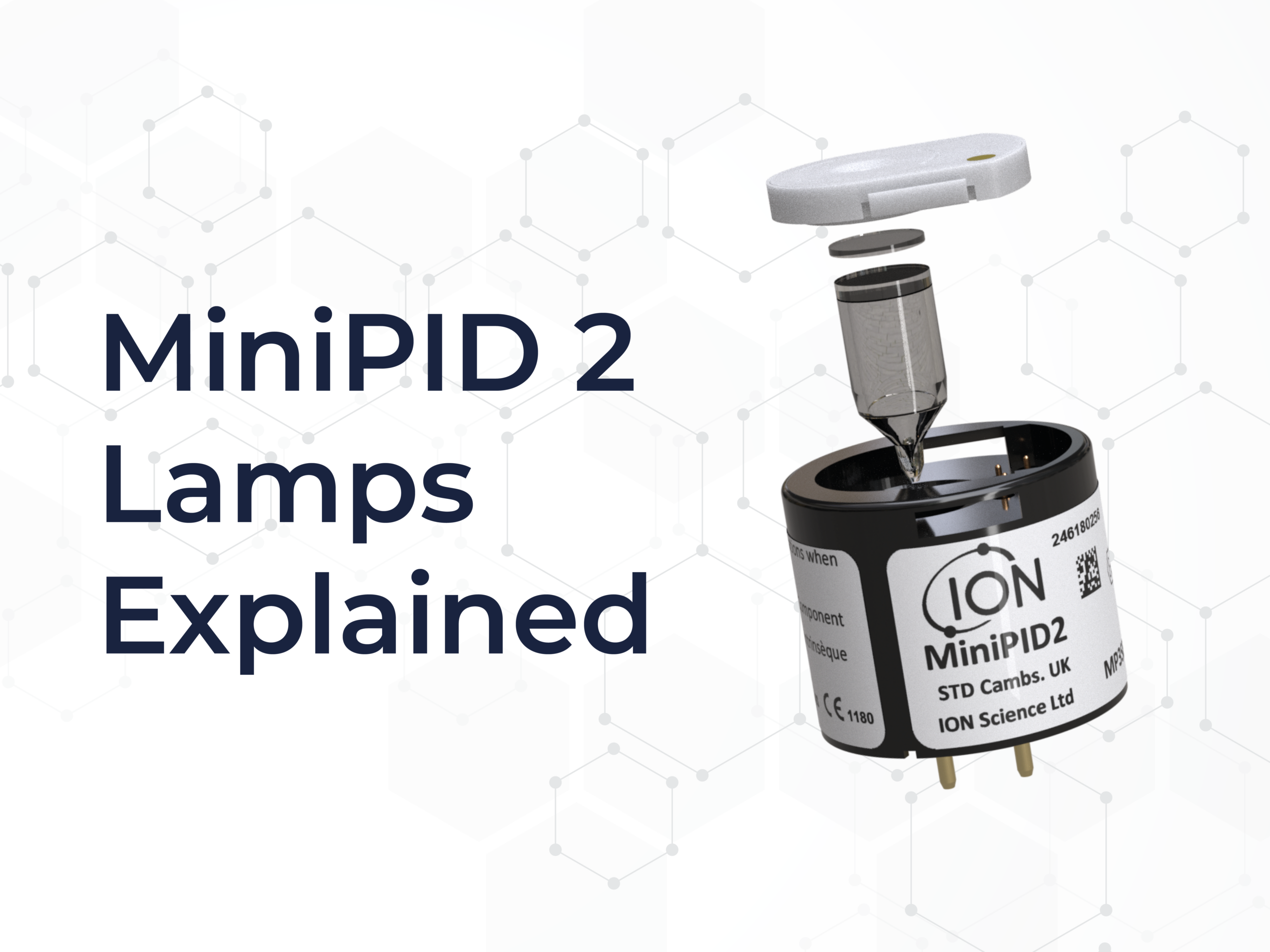
How does MiniPID 2 PID Sensors work?
Introduction: MiniPID 2 PID Sensors and How They Work
ION Science MiniPID 2 consist of a high energy output, ultraviolet lamp and three electrodes. Volatile Organic Compounds (VOCs) enter the detection chamber and are ionised by the ultraviolet light. A negative charged electron is ejected from the molecule making it positively charged. The negatively charged electron is attracted to the positively charged electrode. The positively charged molecule are attracted to the negative electrode. This creates a tiny current which is amplified, the signal increases and decreases with the VOC gas concentration.
Standard photoionisation sensors do have issues, if the sensor chamber becomes contaminated with airborne dirt, ambient humidity can be absorbed by the contamination, creating a conductive path between the electrodes. This conductive path creates an artificial signal that varies with humidity. Airborne dirt can also coat the lamp window which over time, reducing sensitivity. To combat these effects of contamination, ION Science have a unique patented fence electrode and an anti-contamination system. The anti-contamination system consists of a fine, woven PTFE membrane that covers the entrance of the sensor chamber. It not only blocks the path to larger particulates, it also retains ozone, that is naturally generated in the sensor chamber. Ozone cleans the sensor chamber and lamp window, helping the sensor to maintain optimum performance. Even the ION Science sensor chamber may become contaminated, the ION Science fence electrode blocks the path between the two main electrodes. This practically eliminates the effects of humidity. All ION Science PID sensors have a fence electrode and an anti-contamination system.
For more information on how MiniPID works, watch the short video.
The difference between 10.0 eV, 10.6 eV and 11.7 eV (Lamp Energy Output) Explained
In a Photoionisation Detector (PID) sensor, the lamp type and its associated energy level, measured in electron volts (eV), are pivotal factors determining the sensor’s sensitivity to various volatile organic compounds (VOCs) and its suitability for specific applications. Three common lamp types—10.0 eV, 10.6 eV, and 11.7 eV—offer distinct capabilities.
The 10.0 eV lamp, with an energy level of 10.0 eV, excels at detecting VOCs with ionisation potentials below 10.0 eV, such as benzene and toluene. It finds common use in environmental monitoring, industrial hygiene, and hazardous waste site investigations.
How does the MiniPID 2 10.0 eV lamp work?
The ION Science 10.0 eV is achieved by using a strong 10.6 eV lamp in conjunction with a 10.0 eV filter window housed in the electrode stack.
In contrast, the 10.6 eV lamp, emitting photons at 10.6 eV, offers slightly higher energy, rendering it versatile for a broader range of VOCs, including those with higher ionisation potentials. It serves applications in environmental monitoring, indoor air quality assessments, and emergency response scenarios. Lastly, the 11.7 eV lamp, boasting an energy level of 11.7 eV, exhibits the highest energy among the three. This enables the use to detect an extensive array of VOCs with higher ionisation potentials. Consequently, it suits specialised applications such as petrochemical industries, hazardous material response, and research settings.
In essence, the choice between these PID lamp types is generally application dependant and on the specific VOCs you need to detect. With higher energy lamps offering broader sensitivity and lower energy catering to more specialised target compounds. Selecting the right lamp is pivotal to ensuring precise and dependable detection in your unique environmental or industrial context.
Ionisation Energy
Gas ionisation energy, often simply referred to as ionisation energy, is a fundamental concept in chemistry and physics. It is the amount of energy required to remove an electron from an atom or ion in the gas phase, thereby converting it into a positively charged ion. This process is typically represented by the following equation:
M → M⁺ + e⁻
In this equation:
- M represents the neutral atom in the gas phase.
- M⁺ represents the positively charged ion produced after the electron is removed.
- e⁻ represents the ejected electron.
The ionisation energy is usually expressed in units such as electronvolts (eV) or joules per mole (J/mol). It is an important property of elements because it can provide valuable information about an element’s reactivity and electron configuration.
ION Science MiniPID 2 VOC PID sensors respond to a broad range of organic and a few inorganic volatile gaseous chemicals (‘volatiles’). For the PID sensor to respond to a volatile, the photon energy of the lamp must be greater than its ionisation energy (IE). As mentioned already in this blog, ION Science PIDs are available with lamps emitting light of maximum energy of 10.0 eV, 10.6 eV, and 11.7 eV.
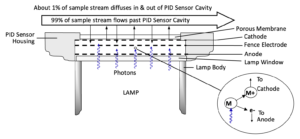
ION Science PID Response Factors
The response factor (RF) relates the sensitivity of PID to a particular compound against the sensitivity to the standard calibration gas isobutylene. The RF is inversely proportional, so the lower the RF, the higher the sensitivity, and vice versa.
Ideally, the PID response to a compound would be calibrated using similar conditions to the end application. For example, calibrating the PID to the compound in the concentration range of interest. However, this is often not practical. Due to its safety, cost, and availability, Isobutylene is often used to calibrate PID, and a RF used to convert the isobutylene calibrated measurement to a measurement of the target volatile:
Concentration of target chemical = isobutylene calibrated measurement x RF
For example, the RF of anisole is 0.59 with a 10.6 eV lamp. That means 0.59 ppm anisole delivers the same PID response as 1 ppm isobutylene. A 10 ppm response to anisole, from an isobutylene-calibrated unit would indicate:
Concentration of anisole = 10 ppm x 0.59 = 5.9 ppm
ION Science are continually running research and development programs into PID. As such, the RFs of many chemicals have been measured using against different PID variants, and lamps of various photon energy and intensity.
When calibrating, for the greatest accuracy, ION Science recommends calibrating against the target gas at the concentration of desired measurement. However, where this is not practical, over 800 RFs are available in technical article ‘TA-02’, download below.
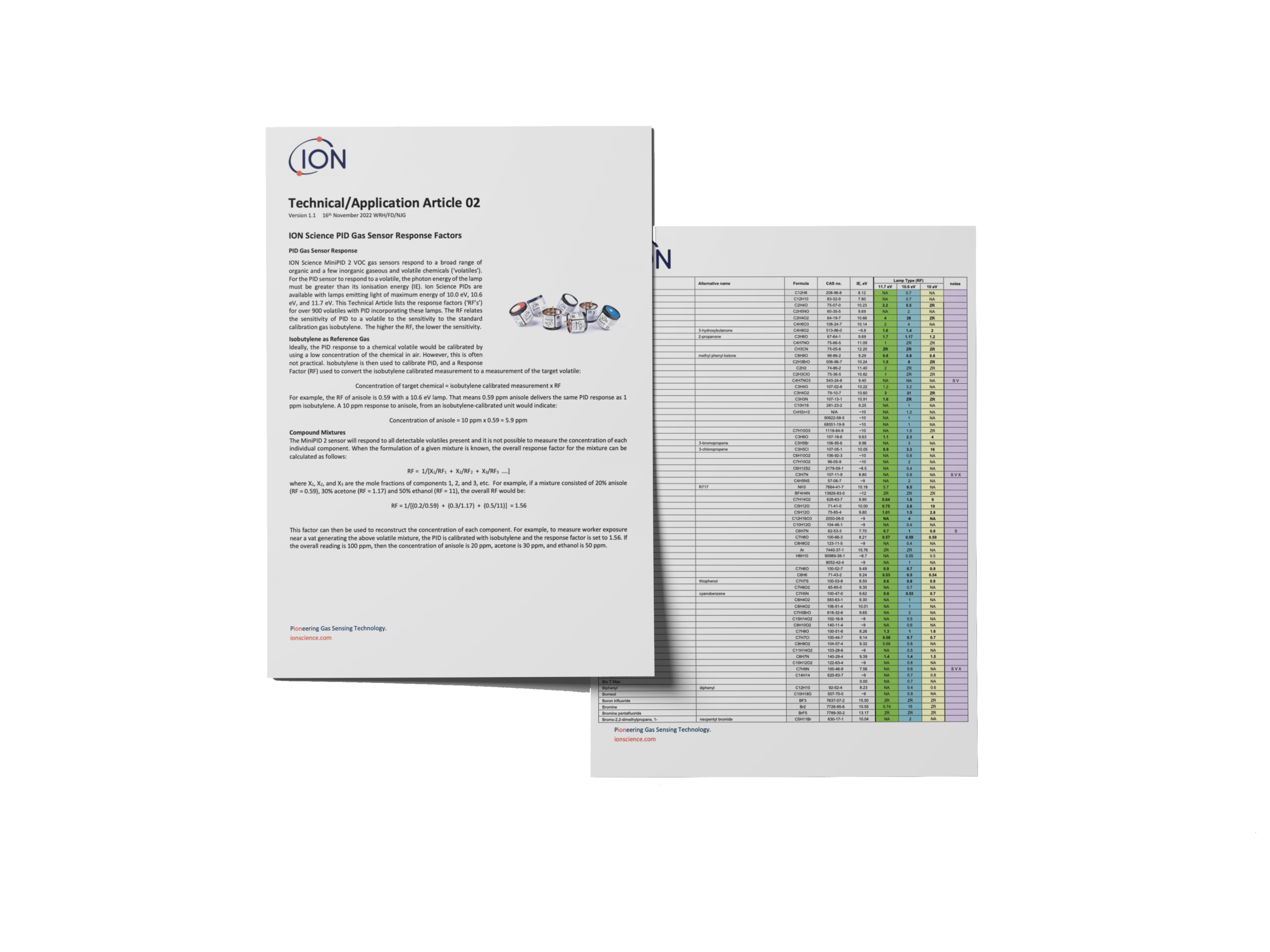
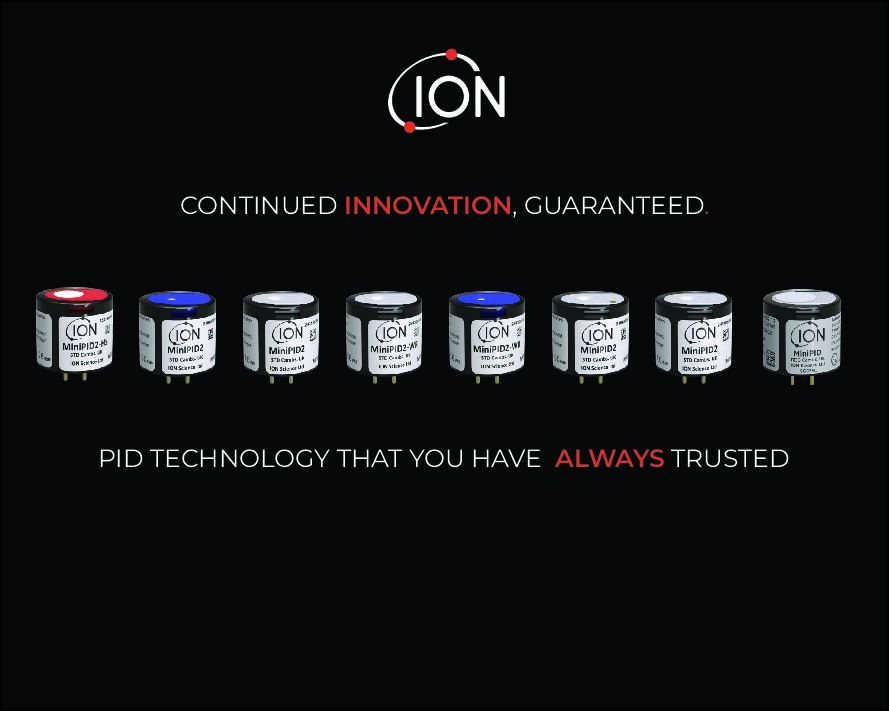



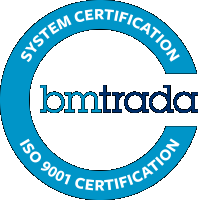
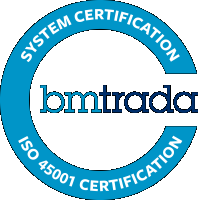
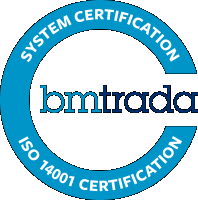
 United Kingdom
United Kingdom